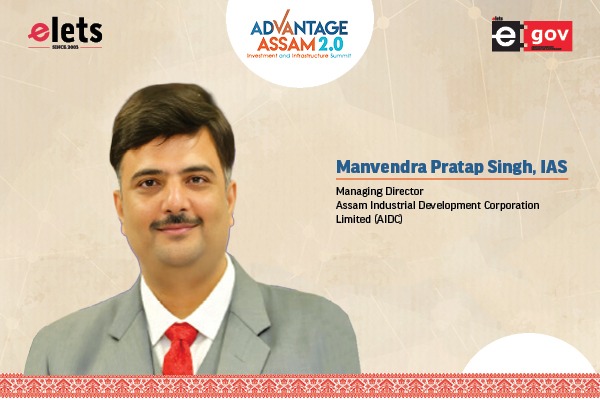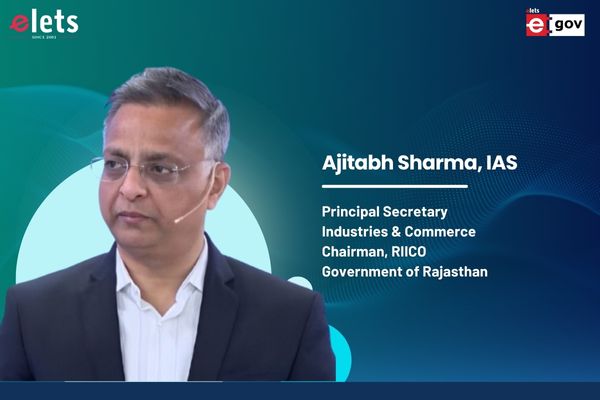
With rising computational demands and India’s focus on self-reliance in defence technology, Logic Fruit is pioneering cutting-edge solutions that balance performance, power efficiency, and ruggedness. Sanjeev Kumar, Co-Founder & CEO of Logic Fruit, shared insights in an exclusive interaction with Kaanchi Chawla of Elets News Network (ENN) on how the company is pushing the boundaries of Single Board Computer (SBC) technology for aerospace and defence applications. Edited Excerpts:
With growing computational demands in aerospace and defence, how does Logic Fruit ensure that its SBCs remain cutting-edge while balancing size, power efficiency, and ruggedness?

Logic Fruit ensures that its SBCs remain cutting-edge by leveraging the latest processor architectures, such as Intel Xeon D and AMD UltraScale FPGAs, optimized for high-performance computing while maintaining a compact and power-efficient design. Our SBCs are built to VITA and MIL-STD-810 standards, ensuring they meet stringent environmental and durability requirements. By integrating high-speed PCIe Gen4 interfaces, real-time processing capabilities, and secure boot mechanisms, we offer a balance of power efficiency and ruggedness suited for aerospace and defence applications.

Do you see any potential future intersections between SBC technology and quantum computing?

While quantum computing is still in its early stages for practical applications in aerospace and defence, SBCs can play a supporting role in integrating quantum technologies into existing computing architectures. Potential intersections include

- Secure Communication: SBCs can be used in quantum cryptography systems for secure key distribution and encryption.
- Data Processing: SBCs can serve as control units interfacing classical and quantum processors for hybrid computing applications.
- Quantum Sensors: SBCs may facilitate real-time data acquisition and processing from quantum-enhanced sensors used in navigation and surveillance.
As quantum computing evolves, SBCs will help bridge the gap between traditional and quantum-based computing models, ensuring seamless integration into mission-critical systems.
Given the rising concerns over cybersecurity in defence applications, how does your organisation embed hardware-level security into its SBCs to protect against threats like cyber espionage and tampering?
Logic Fruit integrates robust security mechanisms into its SBCs, including
- Trusted Platform Module (TPM) for hardware-based authentication and encryption.
- Secure Boot to prevent unauthorised firmware from executing.
- Data Encryption (AES, RSA, ECC) to ensure end-to-end security in sensitive applications.
- Tamper Detection and Protection mechanisms to mitigate physical and cyber threats. These security features ensure resilience against cyber espionage and tampering, meeting stringent defence compliance standards.
With India focusing on self-reliance in defence technology, what gaps in indigenous SBC production does Logic Fruit aim to bridge, and how does it position itself against global competitors?
India has traditionally relied on foreign vendors for high-performance SBCs, such as those from Abaco, Curtiss-Wright, and XES. Logic Fruit is actively bridging this gap by developing indigenous SBCs under the Atmanirbhar Bharat initiative. Our in-house design and manufacturing capabilities allow us to offer custom, high-performance SBCs with features like VPX-based modularity, ruggedization, and secure computing, reducing dependency on foreign suppliers and positioning us as a key domestic player against global competitors.
What does the roadmap for SBC development at Logic Fruit look like over the next 5 years, and how do you balance innovation with the practical needs of defence procurement cycles?
Over the next five years, Logic Fruit plans to expand its SBC portfolio with:
- 3U and 6U VPX Signal Processing SBCs, optimised for high-speed data processing and real-time applications.
- Integration of Advanced Processing Architectures, including Versal ACAP, Intel Agilex FPGAs, and NXP processors.
- GPU-Accelerated Computing Platforms, incorporating NVIDIA and AMD GPUs for AI and image processing applications.
- Heterogeneous Computing Solutions, combining CPUs, GPUs, and FPGAs to meet the growing demands of aerospace and defense applications.
- Ruggedised and Secure SBC Designs, ensuring compliance with defence and aerospace standards while maintaining long-term lifecycle support.
We align innovation with defence procurement cycles by ensuring our products adhere to long-term support, modular upgradeability, and compliance with industry standards such as VITA, MIL-STD, and SWaP (Size, Weight, and Power) constraints.
What are the biggest technical or regulatory challenges in designing SBCs for mission-critical applications, and how do you tackle them?
The biggest challenges include:
- Compliance with defence standards (MIL-STD-810, VITA 46/48, DO-254, DO-178C).
- Harsh environmental requirements (temperature, vibration, radiation, EMI/EMC).
- Long lifecycle and obsolescence management.
- Cybersecurity and supply chain security.
- Safety-Critical Software Support, ensuring compatibility with real-time operating systems (RTOS) and safety certifications like DO-178C for avionics and defence applications.
- Modularity and Scalability, allowing for flexible configurations to meet evolving mission requirements while maintaining interoperability across platforms.
We tackle these by implementing rigorous testing, and lifecycle planning, and working closely with defence agencies to ensure our designs meet operational needs while staying adaptable for future requirements.
How do you see SBCs evolving in the next decade? Will there be a shift towards more software-defined systems or heterogeneous computing models?
The future of SBCs will see
- Increased AI/ML Acceleration: SBCs will integrate AI/ML accelerators, such as dedicated neural processing units (NPUs) or GPUs, to support real-time autonomous decision-making in defence applications.
- Edge Computing & Distributed Processing: More SBCs will be deployed at the edge, enabling real-time data processing with lower latency, and reducing dependency on centralized computing.
- Advancements in Security & Cyber Resilience: Future SBCs will incorporate post-quantum cryptography, AI-driven threat detection, and zero-trust architectures to strengthen cybersecurity in mission-critical environments.
- Greater Focus on Open Standards & Interoperability: Adoption of open architectures such as SOSA (Sensor Open Systems Architecture) and FACE (Future Airborne Capability Environment) will enhance modularity, interoperability, and long-term upgradability.
- Energy-Efficient & SWaP-Optimized Designs: Future SBCs will prioritise low-power architectures, integrating advanced power management techniques to enhance efficiency in battery-operated defense systems.
Logic Fruit is actively investing in these advancements to stay ahead of industry demands and technological evolution.
Be a part of Elets Collaborative Initiatives. Join Us for Upcoming Events and explore business opportunities. Like us on Facebook , connect with us on LinkedIn and follow us on Twitter, Instagram.
"Exciting news! Elets technomedia is now on WhatsApp Channels Subscribe today by clicking the link and stay updated with the latest insights!" Click here!













